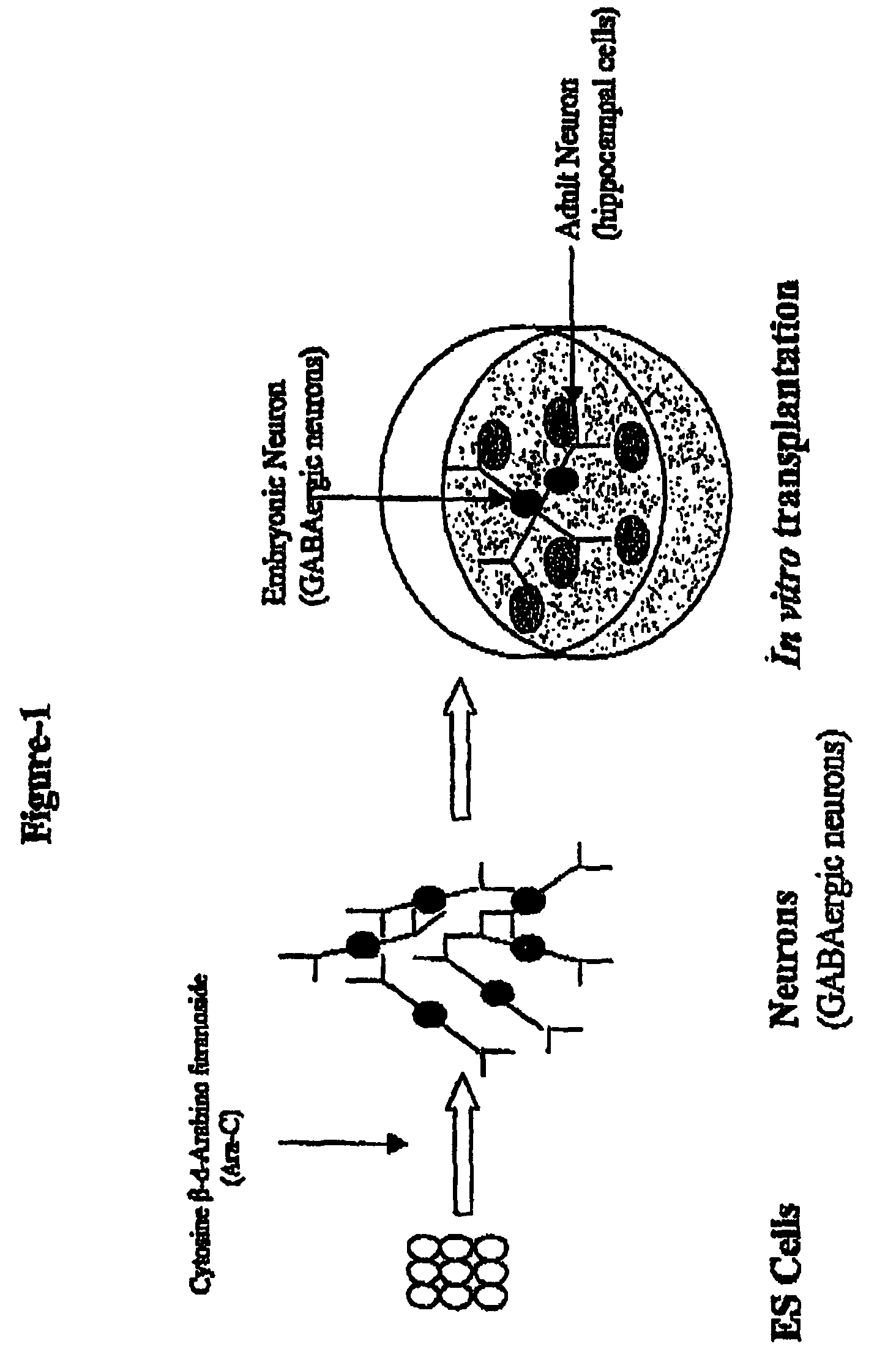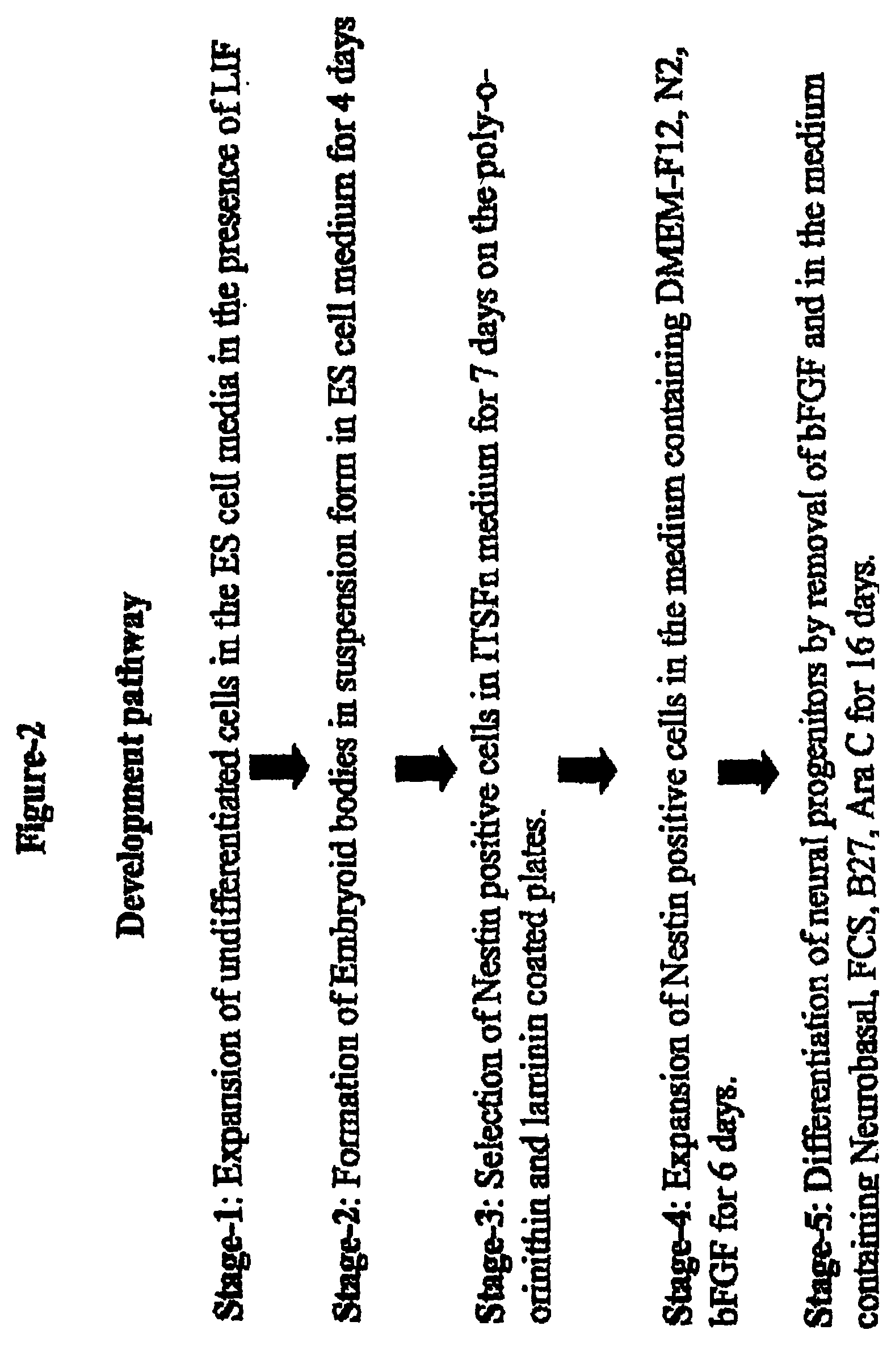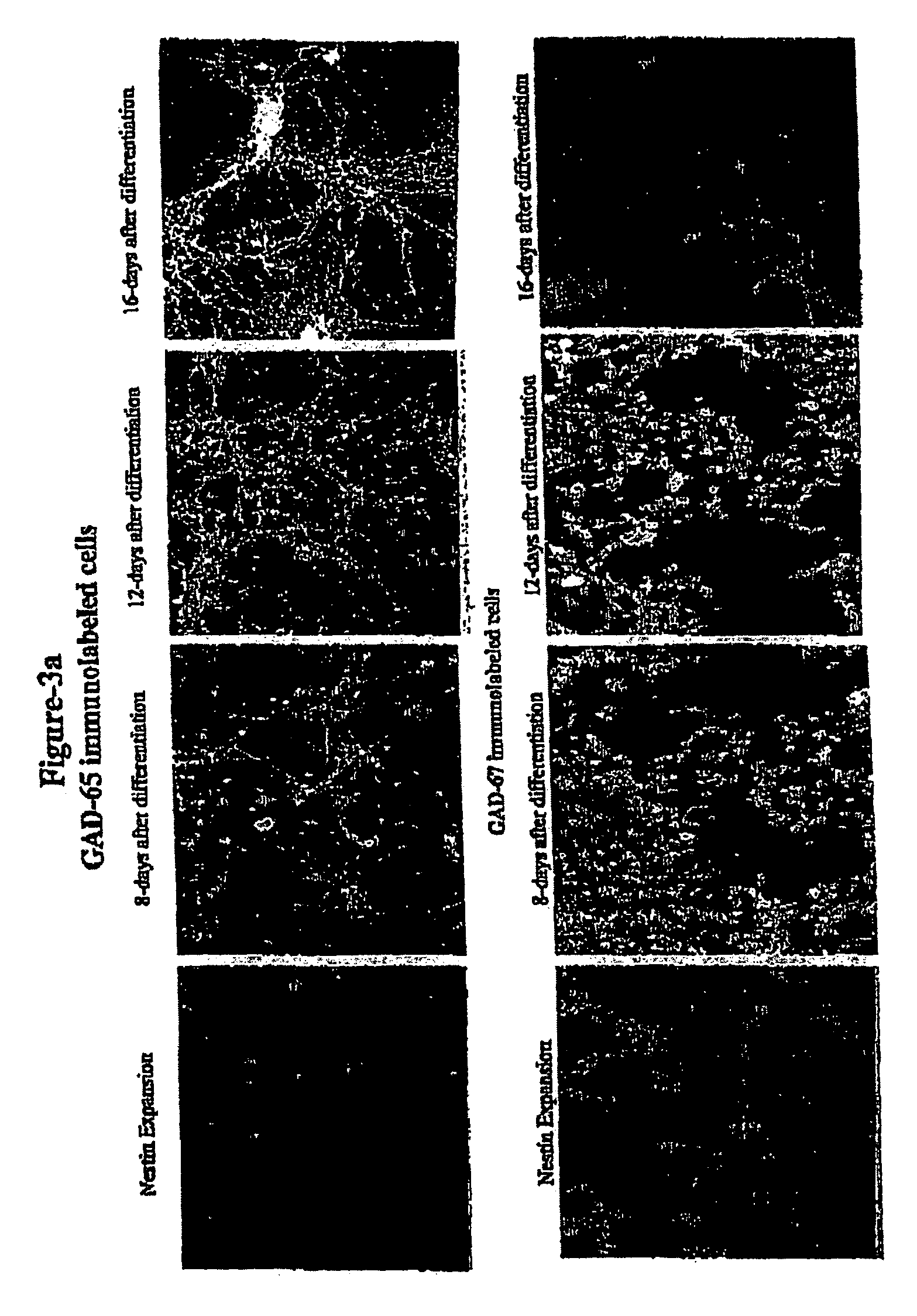In vitro generation of GABAergic neurons from pluripotent stem cells
a pluripotent stem cell and gabaergic neuron technology, applied in the direction of embryonic cells, drug compositions, cardiovascular disorders, etc., can solve the problems of affecting the blood supply of patients, and affecting the survival rate of patients
- Summary
- Abstract
- Description
- Claims
- Application Information
AI Technical Summary
Benefits of technology
Problems solved by technology
Method used
Image
Examples
example 1
[0128]The following example demonstrates the in vitro derivation of functional GABAergic neurons from murine embryonic stem cells. FIG. 1 illustrates the derivation of GABAergic neurons from murine ES cells, while FIG. 2 illustrates the different steps for differentiating murine ES cells into terminally differentiated neurons.
[0129]1) Culture and Expansion of Murine Embryonic Stem Cells:
[0130]The murine ES cells utilized in the present set of experiments were isolated from the inner cell mass of a mouse blastocyst using techniques well known to those of skill in the art. The murine ES cells were of J-1 origin (obtained from National Institute of Dental and Craniofacial Research, National Institute of Health, Bathesda, Md., USA), and were at passage 14. The cells were maintained on mitomycin-C treated mouse embryonic fibroblast feeder cells, which are mitotically inactivated in ES cell medium. The murine ES cells were cultured in the ES cell medium to expand the number of undifferent...
example 2
[0157]The following example, applicants of the present disclosure use an in vitro transplantation model to study the efficacy, survivability, and functionality of GABAergic neurons derived from murine embryonic stem cells. FIG. 1 illustrates the in vitro transplantation model.
[0158]The survivability and functionality of the GABAergic neurons derived from murine ES cells was studied by in vitro transplantation of the GABAergic neurons with hippocampal cells of the adult mouse brain. The hippocampal cells were isolated by first isolating cells from the hippocampus of the adult mouse brain, disassociating these cells with 0.05% trypsin-EDTA, and culturing the cells for one week in Neurobasal-A media supplemented with B27 (20 μg / ml) and N2 (10 μg / ml). The adult hippocampal brain cells were grown on 100 mm tissue culture plates coated with poly-L-ornithine and laminin or gelatin. After one week, GABAergic neurons derived from murine ES cells and collected after 12 days of differentiation...
PUM
| Property | Measurement | Unit |
|---|---|---|
| temperature | aaaaa | aaaaa |
| temperature | aaaaa | aaaaa |
| temperature | aaaaa | aaaaa |
Abstract
Description
Claims
Application Information
 Login to View More
Login to View More - R&D
- Intellectual Property
- Life Sciences
- Materials
- Tech Scout
- Unparalleled Data Quality
- Higher Quality Content
- 60% Fewer Hallucinations
Browse by: Latest US Patents, China's latest patents, Technical Efficacy Thesaurus, Application Domain, Technology Topic, Popular Technical Reports.
© 2025 PatSnap. All rights reserved.Legal|Privacy policy|Modern Slavery Act Transparency Statement|Sitemap|About US| Contact US: help@patsnap.com



